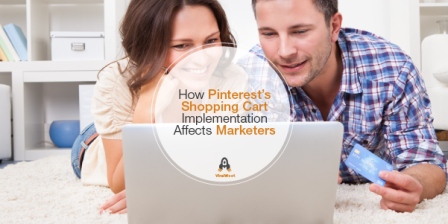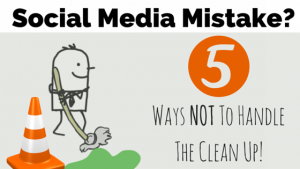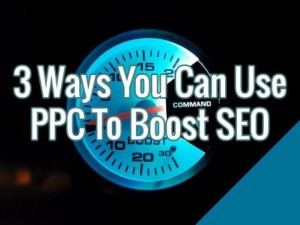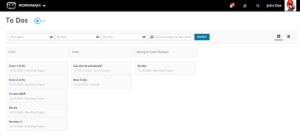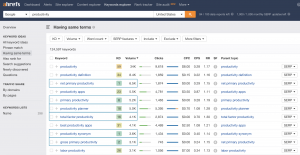August 23, 2016

If you thought Pinterest was just another social media site, think again. In June, the company released information on “new ways to shop with Pinterest,” cementing its position as a viable purchasing platform. Granted, it’s been about year since they introduced a way to buy stuff found on Pinterest right from a user’s phone. However, this new release raises the bar for convenience.
How Pinterest’s Shopping Bag Works
First, a quick look at some terminology. Pinterest doesn’t call their new thing a shopping cart, but rather a shopping bag. It’s not just a question of semantics, or the company trying to position themselves in the marketplace.
The name change makes a lot of sense. In the physical world, a shopping cart denotes something that’s big, bulky and restricted to use at one store. A shopping bag, on the other hand, is lightweight and can be carried by consumers on shopping trips to multiple boutiques.
That’s how Pinterest’s shopping bag functions in the online world. Now users can put any buyable Pin that catches their fancy into their shopping bag, regardless of the merchant. These Pins stay there until the shopper is ready to check out.
On Pinterest, buyers only have to enter their check out information once. That data can then be used by any merchant with which a consumer wishes to conduct business. I should point out that this sounds a lot more like Amazon than Facebook or Twitter. Although currently only available on the web and for Android devices, it’s only a matter of time before an iOS version gets released.
Here’s another soon-to-be-released shopping bag related feature. Consumers will be able to search for similar items in a post. If you see a hat that you like on a Pin, you can search for comparable items on Pinterest. In the future you can also expect to see items related to the ones you’re considering purchasing. That’s along the lines of Amazon’s “customers who bought this item also bought” feature.
What Pinterest’s Shopping Bag Means to Marketers
While there has been lots of coverage regarding this recent release from Pinterest, there’s been little, if any, analysis of its potential impact on marketers. So here’s a few things to consider.
Anything that increases convenience typically leads to greater rates of adoption. So it would not be surprising to see a substantial growth in Pinterest users over the coming year.
More people buying more stuff on Pinterest translates into potentially greater rewards for marketers who spend the time and energy to master this platform. Companies can gain a competitive advantage by being “first to market” and having a greater standing of how to make the most of Pinterest.
Pinterest isn’t a social media platform. It’s a shopping platform with built-in social network features. Look at it another way, Pinterest is one big shopping party where anyone can tell everyone the things in which they’re interested, what they’re thinking of buying, and what they’ve bought.
Inbound marketers have characteristically used social media as a promotional avenue for content designed to match specific points on the buyer’s journey. However, it can be challenging to show how social media activities contribute to an organization’s bottom line.
With Pinterest, things are different. Here on the platform, people exhibit more “commercial intent” than those on your average social media space. It’s a lot easier to justify spending time in a place where people are more likely to make a purchase. The ease with which consumers can buy items increases the likelihood that they will do so.
Whereas the lifespan of social media content is usually measured in minutes, if not seconds, Pinterest Pins have an infinite lifespan. Pins get saved to boards and stay there until removed by the user. So unlike social media, your investment in Pinterest marketing isn’t fleeting.
Keep This In Mind About Pinterest’s Shopping Bag
Pinterest isn’t making it easier for consumers to buy your stuff. It’s making it easier for the public to buy things, period. That means the playing field is essentially level for all marketers. Well, sort of. As mentioned earlier, your competitive advantage comes from an intimate understanding of how Pinterest operates and how consumers use the platform.
If you’re competition still views Pinterest as a social media platform, that’s good news for you. Since you already know it’s a shopping platform with social media features, you can focus on marketing and selling to active buyers while your rivals are busy analyzing their vanity metrics.
Pinterest’s shopping bag makes it easy to collect things from the competition. Although shoppers can’t really conduct product comparisons, you’ll still be vying for their attention up until the moment they check out. Like Yogi Berra said, “It ain’t over, till it’s over.” In this case, truer words have never been spoken.
Ultimately, you don’t control your patron’s shopping experience on Pinterest; only Pinterest does. Your job is to figure out how to tie your efforts in with their goals.
The whole shopping bag concept helps buyers discover products they wouldn’t have otherwise uncovered. But that’s only if you’re one of the 20,000 or so brands with which they have partnered. Currently, Pinterest is working with “a few major brands and 5 commerce platforms;” namely BigCommerce, Demandware, IBM Commerce, Magento and Shopify.
If you’re on a different platform or using one that’s customized, you’ll need to sign up on the waiting list. Unfortunately, there’s no word on how long the wait will be for future integration opportunities.
Ultimately, if there’s one place where marketing and sales can work together, it’s on Pinterest. Although shoppers don’t come to Pinterest specifically to make purchases, many consumers make decisions based on their interaction with the platform while an increasing number are actually buying right from within Pinterest.
Digital & Social Articles on Business 2 Community(78)
